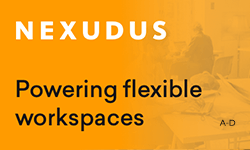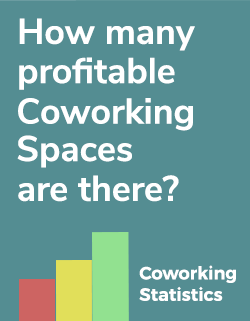During Vienna Design Week, Austrian office furniture design company Bene hosted an evening dedicated to exploring this topic.
Before a wall-to-wall audience in the firm’s slick Vienna showroom, sales and marketing director Wolfgang Neubert presented the findings of a company trend report entitled New Work Spaces: an indepth analysis into the trajectory of office space design, well worth a read. The report explores a range of themes, including what typology of work many of us will conduct, the impact of changing technologies, and the overall look and feel of the office. His presentation came before an expert panel entitled 'Smart Working', for which Bene invited leaders in a range of industries to discuss the future of work.
Before summarizing the eight theses the trend report identifies, Neubert sparked the audience’s imagination by asking what they expected their office to look like in the year 2020. The question is not an easy one. For some inspiration, he showed the audience a picture of a coworking space. And while it is impossible to define what all offices of the future will resemble, they do provide some insight, standing as examplars of versitile and open work environments, providing a solution to a number of the megatrends that the study uncovers.
The workspace of the future will be a knowledge manufactory
Routine and repetitive work will no longer define jobs of the future. They will instead be defined by intellectual, analytical and collaborative tasks. Cross-functional problem solving will provide the innovation companies will need to stay competitive. Knowledge has become the new raw material, which will be processed and applied in very different ways to what we see today.
Bene dubs this new type of white-collar worker the ‘solution worker’: ‘They co-ordinate themselves, take input from others, and will have totally different talents and abilities [...] in order to come up with new and innovative solutions,’ said Neubert.
Around 50% of Europe’s workforce are classified as solution workers: computer technologists, software designers, analysts, marketers and consultants fall into this category. The nature of this ‘knowledge work’ demands a much more flexible, collaborative way of working, and the workers in this economy require more choice and control over their working conditions. They understand what works best for them, and what works best varies greatly from person to person. The key to any workspace catering to knowledge workers is adjustability.
New workspaces, not just a workplace
The future office will need to be an environment that caters to the varied tasks of these new solution workers. For this reason, stated Neubert, ‘The single workplace is history. We will have many workspaces.’
These workspaces will create a versatile environment for all solution workers, from those that are anchored to their desk to those that rarely use the office. The cubicle, although it is unlikely that it will be wiped out entirely, will be supplemented with more areas that cater to indivual work, casual conversations, and group work - and will be free to use by all employees, depending on what they require at the time.









